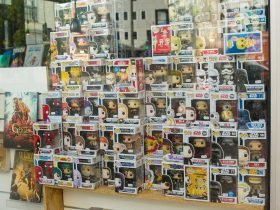When it comes to tracking a investment portfolio, most investors are missing out. They track their portfolio’s value. They may also track returns. But there are at least three other metrics that every investor should monitor: dividends, fees and asset allocation.
There are plenty of free and paid tools that can track a portfolio as I’ll describe below. My personal favorite is Empower. It’s a free financial dashboard that can easily track dividends, fees and asset allocation. That being said, there are other great investment tracking tools available, and one can also do this the old fashioned way—pen and paper.
1. Dividends
How much dividends did your portfolio generate last year? Have your dividend payments increased over the past five years, and if so, by how much? How much in dividends are your investments scheduled to generate next year? Most investors don’t know the answers to these questions. And yet, tracking your dividends and their growth has two key benefits.
First, dividends represent payments out of the profits of the businesses you own. They remind us that the stocks and funds we own aren’t just tickers and numbers on a screen. They are real operating businesses working hard to earn profits and distribute some of the profits to their owners. Tracking our dividends keeps us grounded to this fact.
Second, dividend payments are more stable than price. The price of stocks swing wildly from year to year. In 2021, Vanguard’s S&P 500 index fund (ticker: VOO
VOO
That’s not to say that dividends never go down. They do, they have, and they will. The 1920s and 1930s saw big declines in after-inflation dividends, as did the 1970s and the Great Recession. Yet they are still far less volatile than tracking price alone, which can be a comfort for those fretting over the daily rise and fall of the stock market.
2. Fees
How much are you paying your investment advisor? What is the expense ratio of each fund you own? What is the weighted average expense ratio of your overall portfolio? If you can’t answer these questions, you need to start tracking your fees.
If you don’t believe me, listen to Warren Buffett: “Costs really matter in investments. If returns are going to be 7 or 8 percent and you’re paying 1 percent for fees, that makes an enormous difference in how much money you’re going to have in retirement.”
Just how big a difference does it make?
Using the Empower tool I mentioned above, we can see the effects of a one percent fee for a hypothetical investor with $1.25 million over the next 25 years. It isn’t pretty.
3. Asset Allocation
How much do you have invested in stocks versus bonds? What’s your exposure to international equities? Do you know the duration of your bond portfolio?
I stopped being surprised years ago that many investors don’t know the asset allocation of their portfolio. One of the most important decisions any investor makes is the allocation between stocks and bonds. We should know and track that aspect of our portfolio, at a minimum.
To see how important this is, check out Vanguard’s data on portfolio returns by stock/bond allocation. A 60/40 portfolio, for example, has returned 9.9% since 1926. Bump up stocks to a 70/30 portfolio, and the returns jump to 10.5%. If you have any doubt that this difference is significant, please reread the discussion above on fees.
Several tools can track a portfolio’s asset allocation. Here’s a screenshot of Empower’s asset allocation tool:
Conclusion
Tracking a portfolio’s value and returns is important. But they are not the only metrics investors should track. Watching a portfolio’s dividends, fees and asset allocation can help investors better understand their portfolio and arm them with information necessary to make important investment decisions.
Read the full article here











Leave a Reply